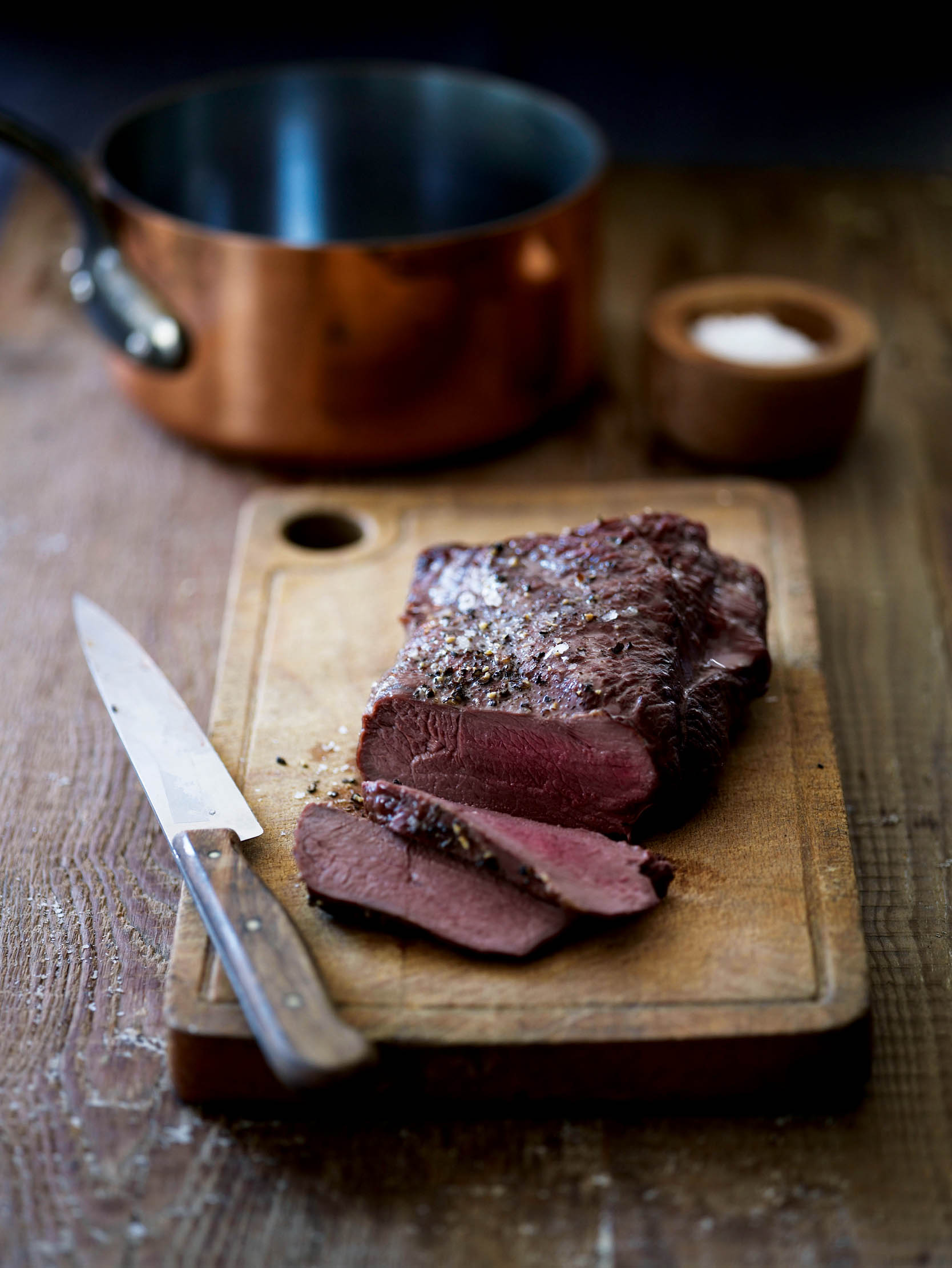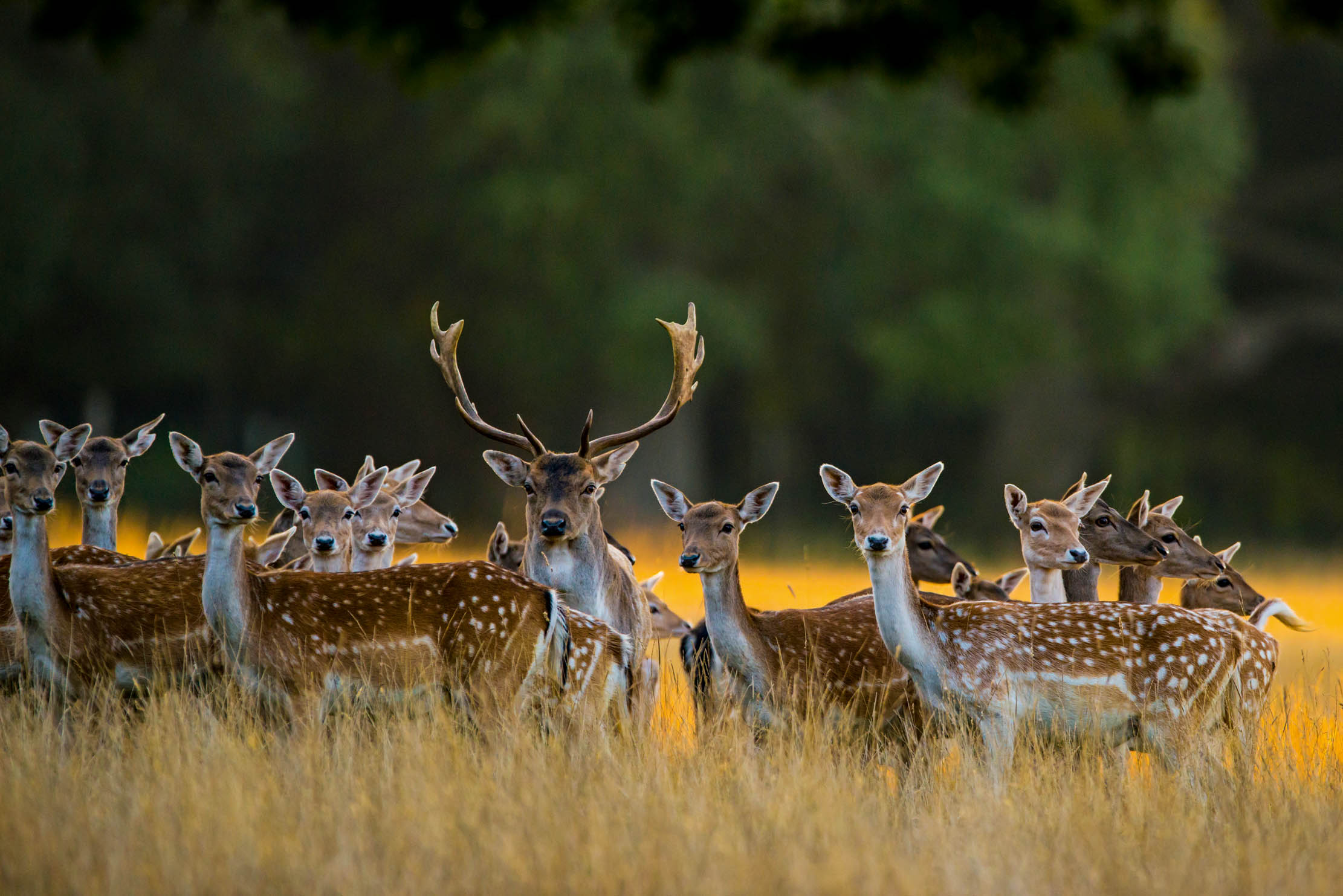Chef Mike Robinson on everything you need to know about venison — plus a superb wild venison recipe
Chef, restaurateur and deerstalker Mike Robinson talks venison, and shares one of his favourite recipes using this superb meat.


The fallow is undoubtedly my favourite species of deer. After 20 years of professionally using wild venison as a core ingredient in my restaurants, I’ve come to appreciate the key qualities that make this deer so delicious and versatile. The fallow is an ideal size for culinary use — a 30kg doe carcass provides an array of different cuts that, thanks to the size of the musculature, can all be cut into perfect portion sizes. The grain is fairly fine, the meat naturally soft and tender without being too soft. The colour of the venison of a well-shot and dressed fallow is pale — which is a huge help when combating the old prejudice that venison is dark, red and bloody. Furthermore, it has a sweet and un-gamey flavour, is naturally juicy and holds its texture well after cooking.
Essentially, venison breaks down into two main types: prime and secondary cuts. Prime cuts start with the saddle. This constitutes the whole front end of the animal, without the shoulders and neck. A lot of people simply remove the sirloin or backstrap from the saddle and then the tenderloins from underneath. This is delicious, but, unless you’re going to cook it whole or put it in a Wellington, it’s a bit of a shame, really.
Ideally, I like to see the front end of the saddle trimmed and cut as a long-boned rack of fallow, and the main saddle (the bit without ribs) split down the middle with a saw and cut into mini T-bone chops, which taste incredible — almost too good for words — when cooked on a barbecue.
The fallow’s haunches are impressive, too. These back legs split into four primal muscles that, once trimmed, produce fat, juicy steaks called pavé. A 30kg fallow will produce 30 of these 180g-ish super-tasty bestselling steaks, which are a staple on our restaurant menus. Its shanks — like lamb shanks, only better — are also worth a try: they braise beautifully and fall tenderly off the bone.
In addition, the secondary cuts — the shoulders, flanks, neck and trimmings — are great for casseroles (1in chunks that slow cook in dishes such as bourguignon) or mince. The fallow is a simply wonderful ingredient and, by buying, cooking and using it regularly, you are actively helping to control the environmental challenge to our countryside that is our ever-expanding wild-deer population. The meat is incredibly healthy, easy to cook and extremely good value for money.
Mr Robinson’s The Elder Restaurant in Bath regularly features wild venison — including fallow carpaccio — on its menu. To order wild venison, visit Deer Box, Ramsbury, Wiltshire — www.deerbox.co.uk.
Recipe: Mike Robinson’s pavé of wild fallow deer
The pavé is a lovely, thick steak taken off a primal muscle in the haunch of the deer. We cut these to a size that weighs about 180g and I recommend cooking them in the following way:
Exquisite houses, the beauty of Nature, and how to get the most from your life, straight to your inbox.
Ingredients
Serves 4
- 4 pavé of 180g (about ¼lb) each
- Knob of butter
- 1tbspn olive oil
- 2 garlic cloves
- Sprig of rosemary
- Sea salt and pepper
Method
Bring the pavés to room temperature.
Put a knob of butter and a tablespoon of olive oil in a heavy frying pan. Add two squashed, but unpeeled cloves of garlic and a sprig of rosemary to the oil and butter.
Place the pan on a high heat, then liberally season the steaks with sea salt and pepper, before putting them in the pan and leaving them well alone for one minute.
Turn the steaks over, basting with all that lovely, herby oil.
After one more minute, put the pan in the oven at 100˚C and cook for 10 minutes for rare-ish meat or 12 minutes for medium.
Remove from the pan and rest on a wooden board for six minutes. Carve across the grain into lovely pink slices of succulent venison.

Fallow Deer: Britain's most beautiful deer
Shy and elegant — yet far more hardy than its fragile appearance implies — the spotty-coated fallow deer is now

The six types of deer in Britain
Joe Gibbs takes a look at the six types of deer in Britain, and how they came to the nation
Country Life is unlike any other magazine: the only glossy weekly on the newsstand and the only magazine that has been guest-edited by His Majesty The King not once, but twice. It is a celebration of modern rural life and all its diverse joys and pleasures — that was first published in Queen Victoria's Diamond Jubilee year. Our eclectic mixture of witty and informative content — from the most up-to-date property news and commentary and a coveted glimpse inside some of the UK's best houses and gardens, to gardening, the arts and interior design, written by experts in their field — still cannot be found in print or online, anywhere else.
